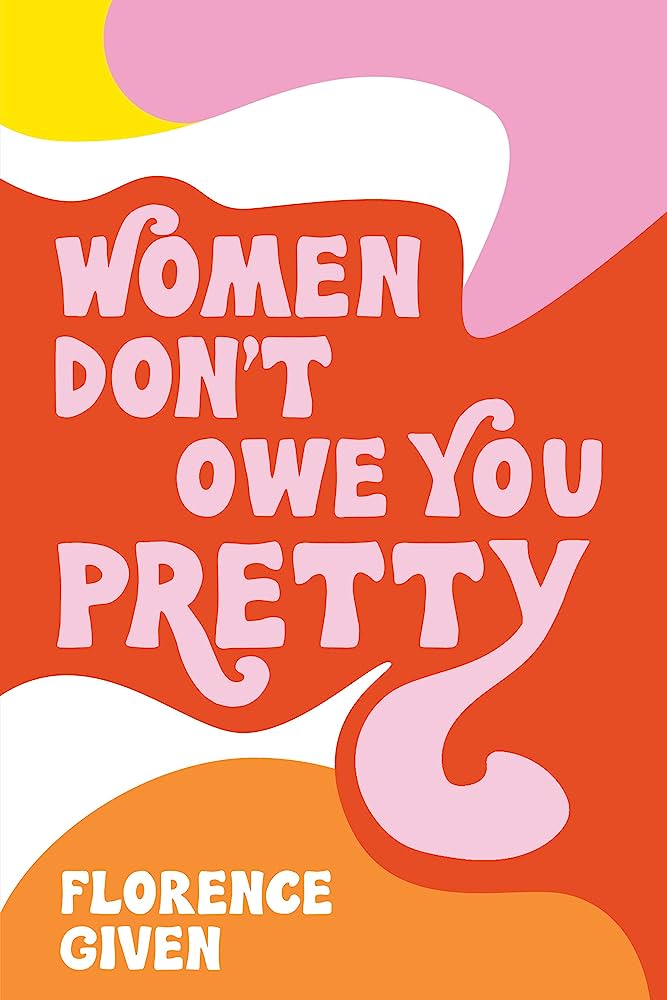When it comes to acronyms there are usually two types of people: the ones who have to look it up right away or it’ll irritate you for weeks, and the ones who just blaze past and don’t care.
When I started reading, and more specifically when I started reading book reviews, I started running into these acronyms. They’re especially rife among book bloggers and have also transitioned into social media, so if you follow Bookstagram or BookTok, you’ll see a lot of these.
Now, I generally hate acronyms because they rarely make it easier to understand, but in a world where we communicate with character limits (or time limits in the case of video content), I get it.
So, I figured a list of the acronyms you’re most likely to run into wouldn’t hurt.
I’ve loosely also grouped them to make it a bit easier to find the term that’s nagging in the back of your head!
Reading and reviewing:
- TBR: To be read, often refers to your shelf on Goodreads, also books in your wishlist or bookshelf waiting to be read
- TBB: To be bought
- DNF: Did not finish – as in “DNF that book” and “I DNFd it”
- RTC: Review to come
- Buddy read/read-along: When people read books together and discuss as they go, which is different to
- Book club: When several people read the same book and then get togeher to discuss it
- Binge read: Reading all (or many) of the books in a series in a row
- Spoiler: Anything in your review/discussion that reveals important plot points from a book
- TSTL: (Too stupid to live) A hero or heroine who keeps making really bad decisions, almost gets killed, and doesn’t learn from their mistakes
- Cliffhanger/cliffie: when the book ends in the middle of a dramatic moment and you have to wait till the next book to find out what happens
- The Feels: This means that you were overwhelmed with emotion when reading the book often meaning that lots of different emotions were involved; it’s high praise to say that a book gave you all the feels!
- Book Hangover: When reading a book leaves you emotionally drained, which can lead to…
- Slump: When you feel uninspired to read, write or review
- Mood Reader/Free-Range Reader: Someone who typically picks up a book based on their current mood or just picks up whatever they feel like in the moment (in contrast, many bloggers have reading schedules, either based on challenges or ARCs to review).
- Shelfie: basically a picture of your bookshelves, may or may not include you!
- Book Spine Poetry: creating a poem from the titles of your books, often done so that you stack the books on top of each other and take a picture to show the poem
- Auto-Buy Author: An author that you love so much you’ll buy anything they publish, no matter what it is
- Affiliate links: when you purchase through an affiliate link, the person who referred you (blogger, influencer etc) will get a small commission – if you like someone’s content, consider using their affiliate links to support them!
Character & plot:
- MC: Main character
- FMC: Female main character
- MMC: Male main character
- POV: Point of view, the character whose perspective we’re experiencing the story through (there can be one or several POVs in a story)
- HEA: Happily ever after, romance books are defined by their goal to get to the HEA in the end and many will argue that if it doesn’t have a HEA, it’s not a romance book
- HFN: Happy for now is the cousin of HEA
- POC: Person of colour
- BIPOC: Black, indigenous and person of colour
- Daphne: A female character who has to be rescued all the time (in reference to Daphne from Scooby Doo)
- Mary Sue: A character who is too perfect and/or too good (which originated from a Star Trek parody story)
- Manic Pixie Dream Girl: A type of female character depicted as vivacious and appealingly quirky, whose main purpose within the narrative is to inspire a greater appreciation for life in a male protagonist
- PT or Plot Twist: An unexpected event in a story—typically one that changes the direction of the plot or characters dramatically
- Info-Dump: When the author gives you lots of background information all at once via narration or dialogue, typically this is seen as a bad thing becuase it rarely advances the story in any way, shape or form and is just the author indulging themselves in their world-building
- World Building: the creation of a fictional world
- Fanfic: Fan fiction, fiction written by fans using the author’s world and characters
- Omegaverse (also known as A/B/O shor for aplha/beta/omega): stories in this genre are set in societies where humans are divided into a dominance hierarchy of dominant “alphas”, neutral “betas”, and submissive “omegas”. (Anything can be omegaversed. And has been. Just google it.)
- het Omegaverse: specifically refers to omegaverse stories with m/f couplings, since the standard in omegaverse is m/m couplings
Relationships:
- LI: Love interest, a character another character is interested in romantically
- OTP/OTL: One true pairing/one true love (that couple that you will root for till the end of time)
- Destined: Meaning that two characters were designated to be together by destiny
- NOTP: (pronounced No-TP) Basically the opposite of OTP, you do not want this couple together
- BROTP: Basically a bromance; a friendship (between guys) that you adore
- Ship: If you ship a couple, it means that you want them to get together (comes from the word “relationship”)
- Book Boyfriend/Girlfriend: The fictional character you only wish could be your real-life love
- Comfort crush: A character that makes you feel safe
- Insta-love/Insta-lust: Love or lust at first sight
- Love Triangle: When the main character can’t decide between two romantic partners—most frustrating when this is drawn out for multiple books in a series
- Slash Fiction: A type of fan fiction where two same-sex characters are paired together
- OMYM/OWYM: Older man, younger woman/Older woman, younger man
- Ménage: A ménage romance is when three people fall in love and live happily ever after together (not a love triangle where the MC has to choose between two love interests)
- Harem: 3+ women interested or romantically involved with one man
- Reverse harem: 3+ men interested or romantically involved with one woman
- M/M: male/male romance
- F/F: female/female romance
Genre and demographics:
- SF: Science fiction
- SF/F: Science fiction/fantasy
- UF: Urban fantasy
- PNR: Paranormal romance (usually adult)
- MG: Middle grade (for ages 8-12 or features main characters of this age range)
- YA: Young adult (for high school aged readers or features main characters of this age range)
- NA: New adult (for college-age or just out of college or features main characters of this age)
- Contemp: Contemporary ficiton takes place in the modern-day and generally doesn’t have any sci-fi, fantasy, magical or paranormal elements
- Comic: comic book
- Web comic: comic that’s published online (on the creators own website or other platforms like Patreon or Webtoon
Book formats:
- GN: Graphic novel
- PB: Paperback
- TPB: Trade paperback
- HC: Hardcover
- MMPB: Mass-market paperback
Formatting and publishing:
- ARC/Galley/Uncorrected Proof/eARC/DRC: Advanced Reader Copy is a (usually unfinalised) copy of the book that publishers/authors provide to reviewers before the publication date, based on the feedback they get they can still make changes before final publication
- eARC/DRC: electronic ARC/Digital review copy
- Physical Copy: Hardcover or paperback book, not an ebook (often in reference to an ARC)
- Finished Copy/FC: The book in its final, published form
- OOP: Out of print
- New Release: A book that has been released recently (usually in the current calendar year)
- Backlist: A book that was released before the current calendar year
- Self-Published: Published by the author, not through a publishing house (often via Amazon)
- Traditionally Published: Published by a publishing houses (usually one of the big ones)
- Indie/Small-Press: Published by a small independent publisher
- ISBN: International Standard Book Number, unique number that identifies a published book (most products have ISBNs, not just books)
- MS: Manuscript (the copy of the book that’s actually written or typed by the author)
- WIP: Work in progress, a book that anauthor is currently working on
- Blurb: The synopsis that you find on the back of the book (and sites like Amazon and Goodreads) that gives you the gist of what it’s about
- TW: Trigger warning, these are found on books that have dark themes that can upset some readers, for other readers the trigger warnings read like a laundry list of things they look for in a book
- Street Team: A team of bloggers and/or readers who enthusiastically promote an author or a series, sometimes street team members get special perks from the author like first dibs on ARCs
- Cover reveal: when an author reveals the cover art of a book for the first time
Book Title Abbreviations:
Books with long names will often get abbreviations to make it easier to use the names in hashtags and on social media with limited time or character limits.
Books that have commonly accepted abbreviations include things like J. R. R. Tolkien’s Lord Of The Rings – LOTR, which refers to any of the three books in the series and can be specified as “LOTR Two Towers”. Or, to add a movie-only example, the Pirates of the Caribbean movies are often abbreviated as POTC plus the number of the movie you’re referring to; so POTC3 is At World’s End.
Another example is Sarah J. Maas’s A Court of Thorns and Roses series that gets shortened as ACOTAR (also the name/abbreviation of the first book in the series) – specific books within the series are often also abbreviated; A Court of Mist and Fury becoming ACOMAF.
Want to get more out of reading books?

Grab this FREE guide on how to start a reading journal, complete with review templates, reading trackers and bingo sheets.
Understand yourself better as a reader, engage more with the books you read & make space for creative self-expression. Get it now!





